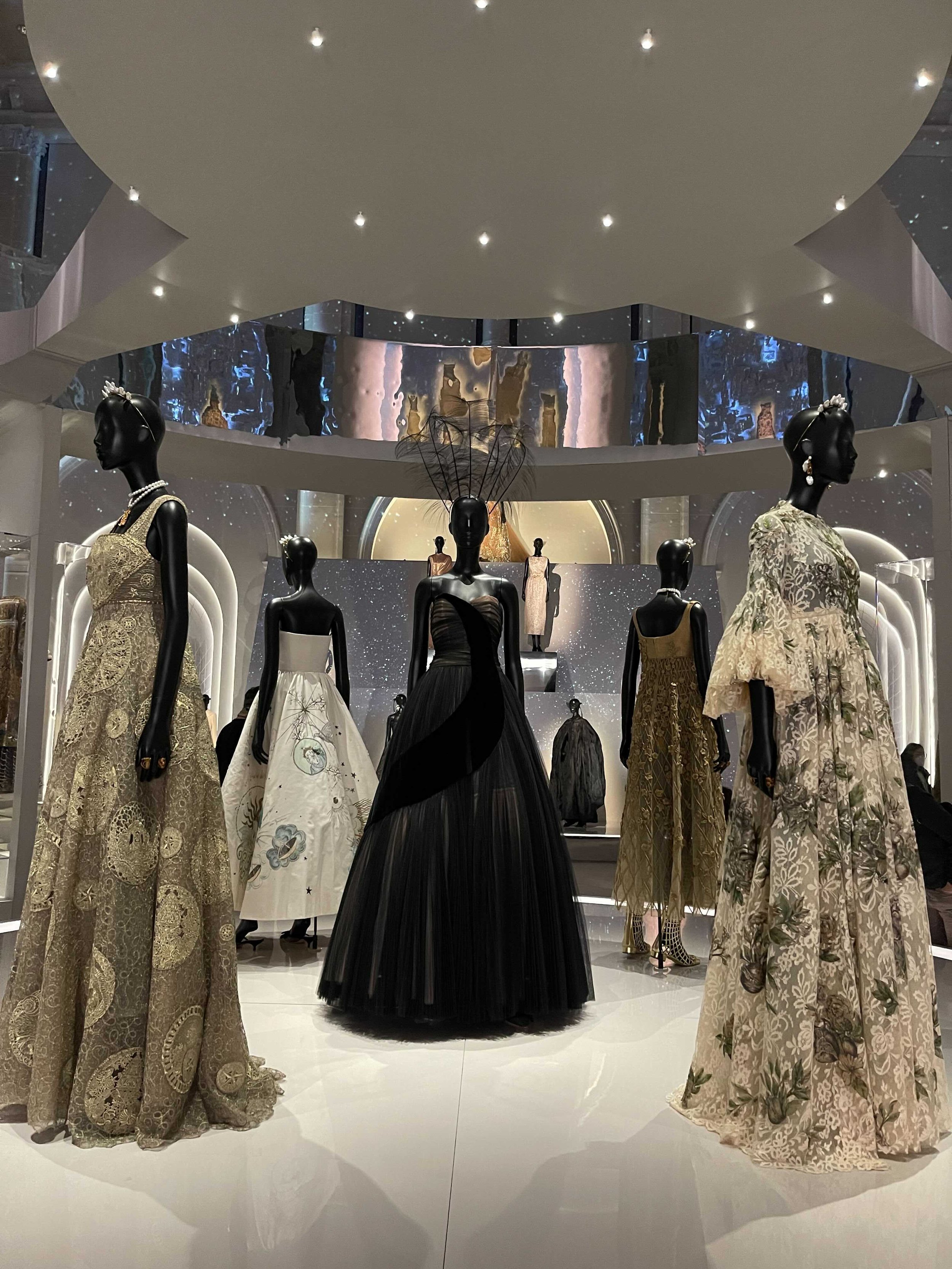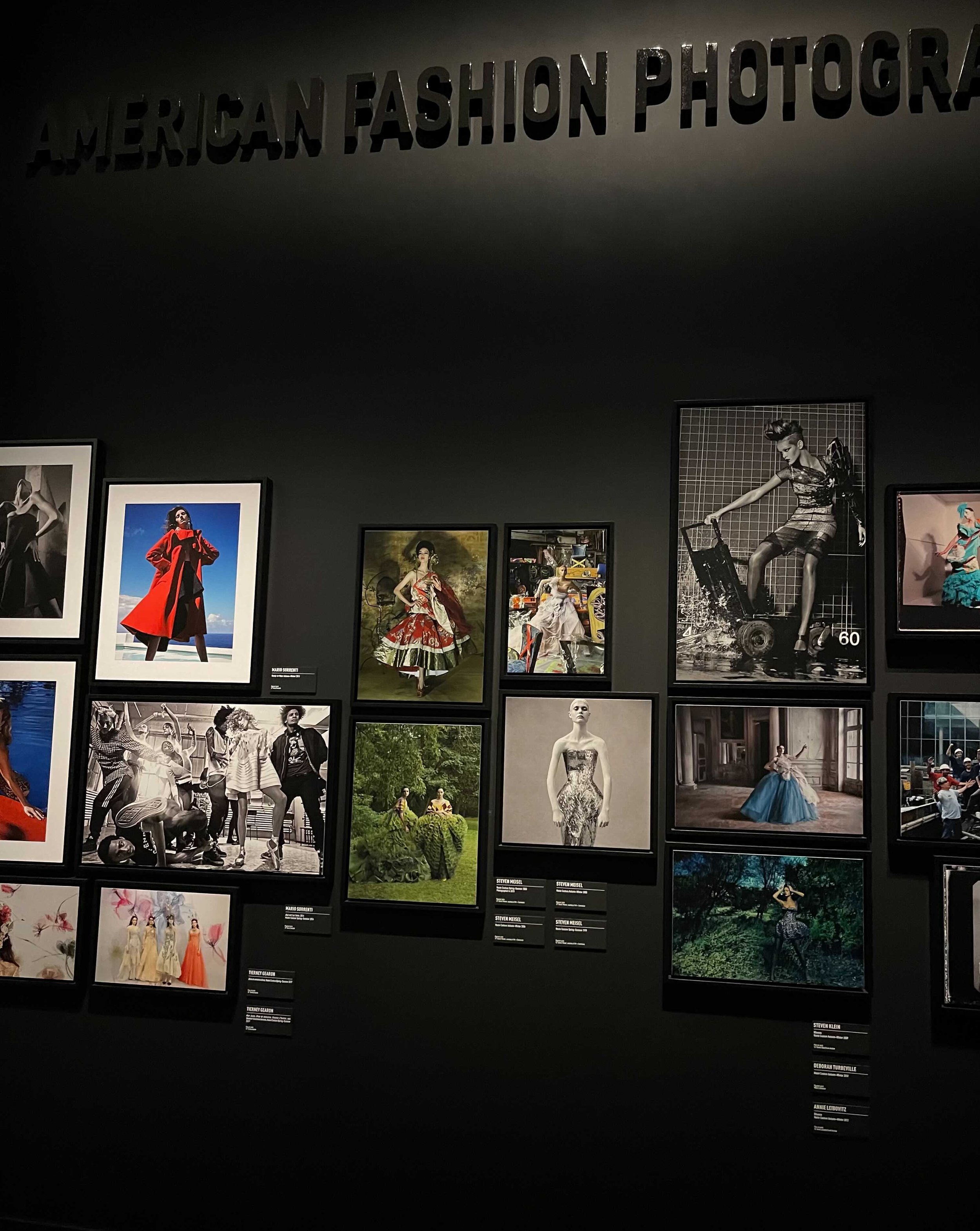A Tour of Dior



My experience at the Brooklyn Museum’s Dior Exhibit
By Mira Gorton, Contributing Writer
Before attending the Dior Exhibit in Brooklyn, NY, I knew Dior as the obsession of influencers—a designer brand with expensive garments. Wow, was I wrong! Dior is more than its prominent name; it is essential to the evolution of fashion designs and makes those who wear it feel powerful.
This exhibition opened my eyes to the amount of work that goes into making Dior a powerhouse and the timeless implications of its labor. As the exhibit comes to a close on Feb. 20, I’m here to share my takeaways with anyone who didn’t attend.
The exhibit began with a brief history of Fashion Designer Christian Dior. Dior was born in Normandy, France in 1905 (Editors of Encyclopedia Britannica, 2022). From early on, he had an artistic eye and a knack for tasteful silhouettes and fabrics. By 1946, Dior started his own fashion house with a collection that Carmel Snow, editor-in-chief of Harper’s Bazaar, coined the “new look” (Tomes, 2017).
Following Dior’s death in 1957, Yves Saint-Laurent, former head-assistant, was promoted to artistic director. Since then, he has highlighted many important celebrity ambassadors including Johnny Depp, Rhianna and Yara Shahidi. This business strategy has allowed the brand to captivate a wide audience and gain the respect of all who admire celebrities. From the incredible history of the uprising of Dior to the strategic business model of the brand, the significance of its mission was quickly becoming apparent.
After I read about the moving history of Dior’s faults and triumphs and grew inspired by how one man could take his ideas and turn them into a thriving fashion house, it was time for the exhibit. I walked from the entryway into a darkly lit room filled with photographs, all starring Dior’s garments. The photography ranged from beautiful 1950s designs to 21st-century portrait photographer Annie Leibovitz’s shoots. The space felt like a time machine; I was transported from era to era, the only constant being Dior’s garments. I then strolled into a high ceiling room covered in mirrors, each reflecting dresses, bags, shoes and accessories. I thought this was going to be the star of the show–little did I know, the next was the enchanted garden.
In the garden, the light shifted from a white to green tone, and panels of mannequins lined the walls from floor to ceiling, each wearing a classic Dior dress. Towards the back of the room stood a couture-crafted gray dress, lined with a light pink slip and covered in shimmering lace beadwork. The dress was styled with a cape that draped down the back of the mannequin and a hat that covered most of its face. I was entranced; this dress made me want to know the story of the girl who wore it and feel the pain of the seamstresses that individually sewed on each lace trim. I circled the room staring at each piece as the faint glistening of machine-lit butterflies fluttered around me.
Following the enchanted garden, I passed through rooms filled with color-coordinated Dior accessories, and finally entered the space filled with dresses worn by celebrity icons. Each dress had a caption with a picture of the celebrity photographed in it and the story that went with the event. From Princess Diana to Sarah Jessica Parker, the importance of Dior was evident in its international presence.
Reflecting back on the experience, there are several aspects that made this exhibit so special. The concept of being so close to the clothing that I could touch it–without the presence of a glass barrier–made me feel like I was a part of the Dior legacy. These timeless masterpieces are emblematic of true design and cultural significance, and invite everyone to partake in the glamor. The design of the exhibition itself made me feel like I was in another universe. I was no longer at the Brooklyn Museum, I was in a universe of Christian Dior. And finally, witnessing the powerful presences who were proud to wear Dior on the runway and in everyday life for the past several decades provided me insight into the timeless nature of the brand’s designs as well as its ability to evolve.
For anyone lucky enough to be in NYC before the exhibit closes on Feb. 20, this is a must-see! It is a nice change from attending the Upper East Side Metropolitan Museum of Art. The exhibition is just the beginning of a fun day in Brooklyn. And, for those of you who will not have the opportunity to attend, I hope my insight allows you a glimpse into this magical world, giving you a new perspective on why Dior has and continues to succeed in the competitive fashion industry.
Sources:
Editors of Encyclopedia Britannica. (2022, January 17). Christian Dior. Britannica.
Tomes, J. (2017, October 2). The New Look: How Christian Dior Revolutionized Fashion 70 Years Ago. DW.
